News
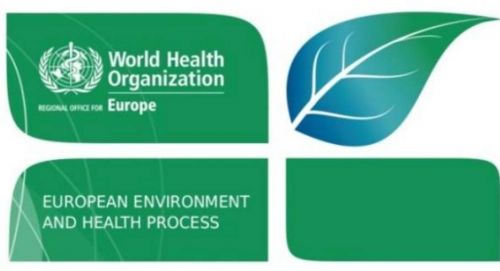
15/10/2020
Parc de l'Alba in a WHO project
Parc de l'Alba in a WHO project
Parc de l'Alba, whose business area corresponds to the Barcelona Synchrotron Park, is participating in a project of the Health and Environmental Impact Assessment Program of the World Health Organization's (WHO) European Center for Environment and Health, which aims to analyze the redevelopment of contaminated sites.
The project approaches this challenge from three different perspectives:
The aim of the project is to develop tools for local and regional European administrations, which are the ones directly supporting the challenge and the problem, to manage these redevelopment projects in an effective and safe way, protecting health and the environment.
In this WHO project, Parc de l'Alba is contributing its experience with the restoration of Àrids Catalunya, an old 4 ha clay quarry located within the park's perimeter. Exploited until the 1970s and subsequently filled with various types of waste, basically construction debris, including asbestos, this quarry, transformed by the way into an uncontrolled landfill, represented a problem for the environment and health.
In 2010, this cuvette was restored and later redeveloped. The site is now fully restored and reforested with a viewpoint and new paths marked for public use, and since 2012 it has been officially part of the Parc de l'Alba green corridor.
In this interesting experience, Parc de l'Alba has totally empathised with the other case studies analyzed throughout Europe, sharing both its strong and weak points, and is pleased to be able to contribute to strengthening the tools for reusing contaminated spaces in conditions that are safe and healthy for people and the environment.
* (SEA, Strategic Environmental Assessment; EIA, Environmental Impact Assessment; HIA, Health Impact Assessment; HHRA, Human Health Risk Assessment; HBM, Health Biomonitoring)
The project approaches this challenge from three different perspectives:
- Compilation of practical cases and lessons learned.
- Review of evidence of environmental, health and equity effects in the conversion and remediation of contaminated sites.
- Analysis of the impact assessment processes (SEA, EIA, HIA, HHRA, HBM *) in relation to the remediation and subsequent reuse of contaminated sites.
The aim of the project is to develop tools for local and regional European administrations, which are the ones directly supporting the challenge and the problem, to manage these redevelopment projects in an effective and safe way, protecting health and the environment.
In this WHO project, Parc de l'Alba is contributing its experience with the restoration of Àrids Catalunya, an old 4 ha clay quarry located within the park's perimeter. Exploited until the 1970s and subsequently filled with various types of waste, basically construction debris, including asbestos, this quarry, transformed by the way into an uncontrolled landfill, represented a problem for the environment and health.
In 2010, this cuvette was restored and later redeveloped. The site is now fully restored and reforested with a viewpoint and new paths marked for public use, and since 2012 it has been officially part of the Parc de l'Alba green corridor.
In this interesting experience, Parc de l'Alba has totally empathised with the other case studies analyzed throughout Europe, sharing both its strong and weak points, and is pleased to be able to contribute to strengthening the tools for reusing contaminated spaces in conditions that are safe and healthy for people and the environment.
* (SEA, Strategic Environmental Assessment; EIA, Environmental Impact Assessment; HIA, Health Impact Assessment; HHRA, Human Health Risk Assessment; HBM, Health Biomonitoring)
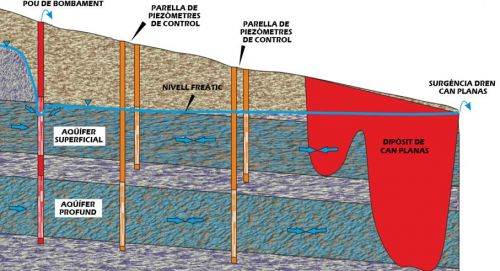
02/10/2020
The hydraulic barrier of Can Planas comes into operation
The hydraulic barrier of Can Planas comes into operation
The Parc de l'Alba —whose business area is the Barcelona Synchrotron Park— a set of green areas (half of the total surface of the park) with an emblematic biological corridor and, at the same time, a future residential area.
An old landfill called Can Planas, located in the green areas of the Park, is being remedied with a first action - a hydraulic barrier - which came into operation on September 23.
The Can Planas landfill is a set of clay extraction basins filled, between the 70s and the 90s, with different types of waste. It occupies a total of 18 hectares and a volume of 2.45 million m3. In 1995, it was closed down by the Barcelona Metropolitan Area (AMB), which has been in charge of the post-closure phase ever since. The document available here (in Catalan) tells the whole set of actions carried out to make this damaged space a new and large healthy green space.
On the basis of the actions proposed by the hydrogeological and gas reports and the quantitative risk analysis, the AMB has carried out the work on the hydraulic barrier that must minimize the entry of clean subway water into the landfill, thus reducing the output of leachate downstream and through the drainage system of Can Planas (see the image illustrating the news).
The proposed operation of the hydraulic barrier was agreed and validated by the ACA (Catalan Waste Agency) in a resolution available here (in Catalan) dated 9/07/20. This resolution requires the creation of a working group with decision-making capacity that will supervise its proper functioning. This working group includes technicians from the AMB, the ACA, the ARC (Catalan Waste Agency), the Cerdanyola City Council and the Consortium that manages the park.
The commissioning of the hydraulic barrier has been carried out following the protocol established and validated by the ACA, which also incorporates a protocol for starting and stopping the pumping according to the measured values of the phreatic levels, electrical conductivity and complete analytical control of the groundwater.
This barrier is the first step towards improving the environment of the Can Planas landfill, which will continue with the installation of a surface sealing layer, among other improvement actions, and the subsequent and definitive implementation of the Parc de la Plana del Castell. Soil recycling, developing new green areas in conditions of safety and health for citizens and the environment, plays a central role in the sustainable governance of soil as a strategic natural resource and is within the objectives of the 7th Environmental Action Programme of the European Union.
An old landfill called Can Planas, located in the green areas of the Park, is being remedied with a first action - a hydraulic barrier - which came into operation on September 23.
The Can Planas landfill is a set of clay extraction basins filled, between the 70s and the 90s, with different types of waste. It occupies a total of 18 hectares and a volume of 2.45 million m3. In 1995, it was closed down by the Barcelona Metropolitan Area (AMB), which has been in charge of the post-closure phase ever since. The document available here (in Catalan) tells the whole set of actions carried out to make this damaged space a new and large healthy green space.
On the basis of the actions proposed by the hydrogeological and gas reports and the quantitative risk analysis, the AMB has carried out the work on the hydraulic barrier that must minimize the entry of clean subway water into the landfill, thus reducing the output of leachate downstream and through the drainage system of Can Planas (see the image illustrating the news).
The proposed operation of the hydraulic barrier was agreed and validated by the ACA (Catalan Waste Agency) in a resolution available here (in Catalan) dated 9/07/20. This resolution requires the creation of a working group with decision-making capacity that will supervise its proper functioning. This working group includes technicians from the AMB, the ACA, the ARC (Catalan Waste Agency), the Cerdanyola City Council and the Consortium that manages the park.
The commissioning of the hydraulic barrier has been carried out following the protocol established and validated by the ACA, which also incorporates a protocol for starting and stopping the pumping according to the measured values of the phreatic levels, electrical conductivity and complete analytical control of the groundwater.
This barrier is the first step towards improving the environment of the Can Planas landfill, which will continue with the installation of a surface sealing layer, among other improvement actions, and the subsequent and definitive implementation of the Parc de la Plana del Castell. Soil recycling, developing new green areas in conditions of safety and health for citizens and the environment, plays a central role in the sustainable governance of soil as a strategic natural resource and is within the objectives of the 7th Environmental Action Programme of the European Union.
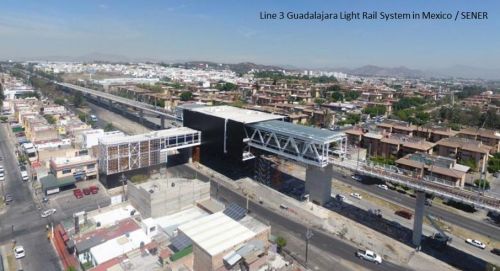
30/09/2020
SENER, the leading urban transport engineering company in Mexico
SENER, the leading urban transport engineering company in Mexico
The engineering and technology group SENER, with Catalan headquarters in Barcelona Synchrotron Park, has been developing engineering and technology projects in the areas of Infrastructure in Mexico since 2006, with numerous contracts in urban and railway transport systems, as well as various works in intelligent transport systems on roads throughout the country and, at the same time, with a notable portfolio of projects in the Energy sector.
This September the new line 3 of the Guadalajara metro (press release) was inaugurated in this country, considered to be one of the most modern in the world. This project was developed entirely by SENER, from the pre-feasibility study to the detailed design of the line and the project management during the construction phase.
On the other hand, this same month, the SENER group has signed a contract, won through a national public tender, to carry out the technical studies for the Monterrey suburban train (note release) that will combine passenger and freight transport. SENER will carry out both field work (geometric and topographical surveys, hydrological, geological, geotechnical and environmental feasibility studies, etc.) and the preliminary project (general description and mixed mode railway engineering).
These two projects, together with others previously carried out by SENER, such as the Toluca-Mexico City passenger train or the Mayan train, confirm SENER as the leading urban transport engineering company in Mexico.
This September the new line 3 of the Guadalajara metro (press release) was inaugurated in this country, considered to be one of the most modern in the world. This project was developed entirely by SENER, from the pre-feasibility study to the detailed design of the line and the project management during the construction phase.
On the other hand, this same month, the SENER group has signed a contract, won through a national public tender, to carry out the technical studies for the Monterrey suburban train (note release) that will combine passenger and freight transport. SENER will carry out both field work (geometric and topographical surveys, hydrological, geological, geotechnical and environmental feasibility studies, etc.) and the preliminary project (general description and mixed mode railway engineering).
These two projects, together with others previously carried out by SENER, such as the Toluca-Mexico City passenger train or the Mayan train, confirm SENER as the leading urban transport engineering company in Mexico.
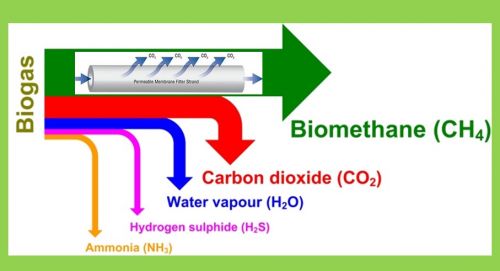
16/09/2020
Biogas injected into the natural gas grid: works begin!
Biogas injected into the natural gas grid: works begin!
Parc de l’Alba, which business area is known as Barcelona Synchrotron Park – also includes a future residential neighbourhood and different green areas (half of the total surface of the park) with an iconic 1km-wide biologic corridor.
Between 2007 and 2011, an excavation made in one of these green plots as the result of a former clay extraction activity was used to store waste bales from Barcelona Metropolitan Area waste recovery plants. Since the landfill has been closed, the biogas produced by the decomposition of bales organic material is extracted and burned in order to prevent its emission into the atmosphere.
To take advantage of the methane present in this biogas at a significant 60% concentration, Naturgy Energy Group (a Spanish utility formerly known as Gas Natural Fenosa), designed a pioneer project in Spain: setting up both an upgrading plant to filter methane and an injection plant to introduce this biomethane into the natural gas grid. The upgrading plant will use membrane separation technologies, an upgrading system that consists of the physical separation of CO2 and CH4 molecules based on their different size.
Once obtained all the permissions from the administrations and completed the bidding stage, Naturgy has started the construction of these two plants scheduled to start operating early next year.
Between 2007 and 2011, an excavation made in one of these green plots as the result of a former clay extraction activity was used to store waste bales from Barcelona Metropolitan Area waste recovery plants. Since the landfill has been closed, the biogas produced by the decomposition of bales organic material is extracted and burned in order to prevent its emission into the atmosphere.
To take advantage of the methane present in this biogas at a significant 60% concentration, Naturgy Energy Group (a Spanish utility formerly known as Gas Natural Fenosa), designed a pioneer project in Spain: setting up both an upgrading plant to filter methane and an injection plant to introduce this biomethane into the natural gas grid. The upgrading plant will use membrane separation technologies, an upgrading system that consists of the physical separation of CO2 and CH4 molecules based on their different size.
Once obtained all the permissions from the administrations and completed the bidding stage, Naturgy has started the construction of these two plants scheduled to start operating early next year.
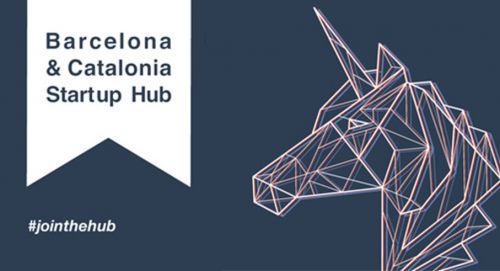
23/07/2020
Catalan start-ups know how to attract funding
Catalan start-ups know how to attract funding
On July 14, CaixaBank and IESE Business School presented the first study on the entrepreneurial ecosystem in Spain and Portugal.
According to the analysis based on 993 representative start-ups from the Iberian Peninsula (25% of the fabric according to the report), among the 272 start-ups that achieved their last round of financing between 2018 and 2019, 71 Catalan start-ups succeeded in attracting €25.4 million of the total €77 million raised. They are followed by Madrid (17.2 million, 58 start-ups) and the Valencian Community (9.8 million, 20 start-ups). Including all the possible sources of funding, the report estimates that start-ups raised more than €700 million in the last two years, including 500 million in capital, 4 times more than in the previous report.
The Environmental Impact sector is the most represented (24%), followed by Health (14%), PropTech (technology / real estate sector) (11%) and Mobility (9%). Regarding the most outstanding technologies on which their products/services are based, 51% are defined as Software & Platforms, 36% are based on Data Analysis, 24% on Artificial Intelligence and 20% on the Internet of Things (IoT).
IESE head of the study Maria Júlia Prats estimates that these companies will need another €700 million for the next 2-5 years to remain well capitalized, without counting the coronavirus factor that could require twice as much.
According to the analysis based on 993 representative start-ups from the Iberian Peninsula (25% of the fabric according to the report), among the 272 start-ups that achieved their last round of financing between 2018 and 2019, 71 Catalan start-ups succeeded in attracting €25.4 million of the total €77 million raised. They are followed by Madrid (17.2 million, 58 start-ups) and the Valencian Community (9.8 million, 20 start-ups). Including all the possible sources of funding, the report estimates that start-ups raised more than €700 million in the last two years, including 500 million in capital, 4 times more than in the previous report.
The Environmental Impact sector is the most represented (24%), followed by Health (14%), PropTech (technology / real estate sector) (11%) and Mobility (9%). Regarding the most outstanding technologies on which their products/services are based, 51% are defined as Software & Platforms, 36% are based on Data Analysis, 24% on Artificial Intelligence and 20% on the Internet of Things (IoT).
IESE head of the study Maria Júlia Prats estimates that these companies will need another €700 million for the next 2-5 years to remain well capitalized, without counting the coronavirus factor that could require twice as much.
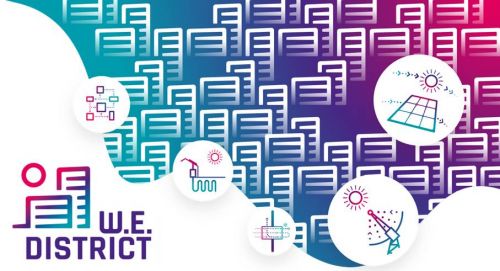
06/07/2020
The Barcelona Synchrotron Park joins the new WEDISTRICT EU program
The Barcelona Synchrotron Park joins the new WEDISTRICT EU program
Thanks to its experience in the field of district heating and cooling, the Barcelona Synchrotron Park participated in the 2016-2020 THERMOS EU project dedicated to develop a free open-source tool for planning thermal energy systems in urban areas rapidly and cheaply.
Last month, our park officially joined the new WEDISTRICT EU program via a cooperation agreement with the project consortium (22 partners, 9 countries) that aims at demonstrating that innovative 100% fossil free heating and cooling solutions are possible for new and existing district heating & cooling systems.
The contribution of the park will be as a “demo follower” in order to perform a virtual demonstration case. Among the different technologies that will be studied there is the recovery of waste heat in data centres, such as those operating in our park, by using fuel cells that raise the temperature of waste heat -making it adaptable to our DH&C network- and produce electricity to power the data centre.
With EU funding of €15M, the WEDISTRICT program started in late October and will end in March 2023 with 10 technologies developed and tested in 4 different sites, one in Luleå (Sweden) to test the Data Centers excess heat integration in existing district heating.
Contact in the Barcelona Synchrotron Park: Carlos Dapena
Last month, our park officially joined the new WEDISTRICT EU program via a cooperation agreement with the project consortium (22 partners, 9 countries) that aims at demonstrating that innovative 100% fossil free heating and cooling solutions are possible for new and existing district heating & cooling systems.
The contribution of the park will be as a “demo follower” in order to perform a virtual demonstration case. Among the different technologies that will be studied there is the recovery of waste heat in data centres, such as those operating in our park, by using fuel cells that raise the temperature of waste heat -making it adaptable to our DH&C network- and produce electricity to power the data centre.
With EU funding of €15M, the WEDISTRICT program started in late October and will end in March 2023 with 10 technologies developed and tested in 4 different sites, one in Luleå (Sweden) to test the Data Centers excess heat integration in existing district heating.
Contact in the Barcelona Synchrotron Park: Carlos Dapena









